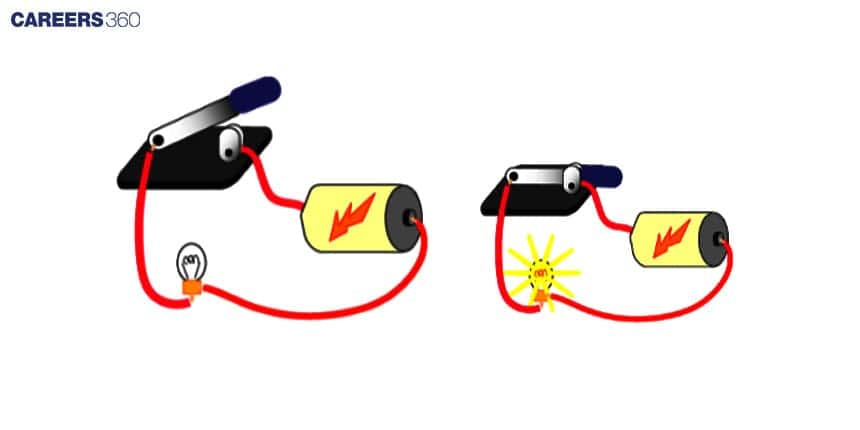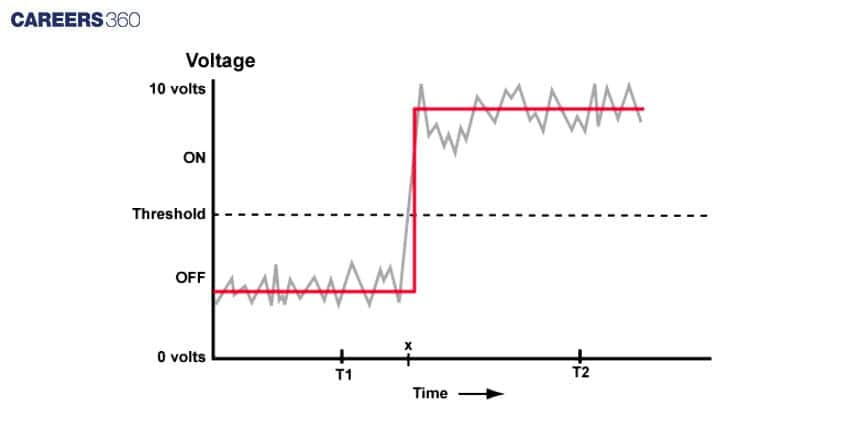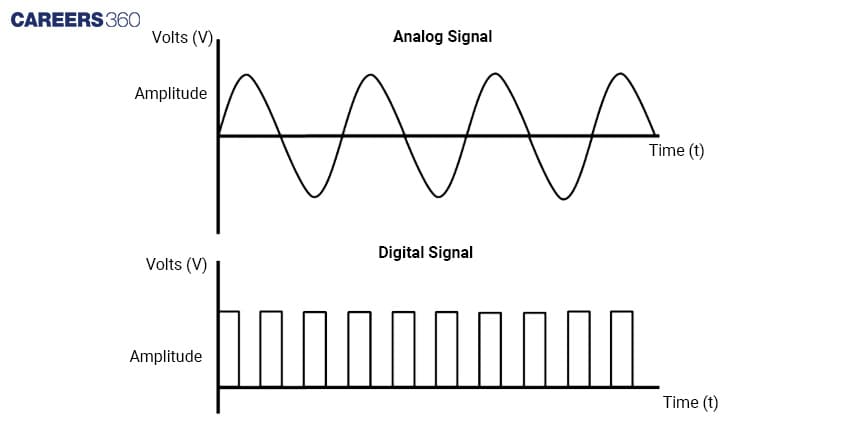Understanding Binary Operations: The Language Of Computers
This article is all about Binary Operations. These are special ways we work with pairs of numbers, like adding, subtracting, multiplying, and dividing them. It might sound basic, but these operations are like building blocks for many cool things in maths and real life. They help us understand how numbers work together and are used in computers, phones, and even in making decisions.

In school, especially in Class 12 mathematics, these operations are discussed. They're taught because they're the building blocks of more complicated maths later on. Knowing about these operations helps in solving bigger problems and in understanding how things function in the digital world.
We'll explore how these operations are not just about maths problems but are super important in everyday life. For example, think about how your phone works or how machines in factories run. These operations are like the secret rules that tell them what to do. They also help scientists in genetics and people in finance to figure out stuff. Understanding these operations helps us see how things work and make sense of our digital world.
Understanding the Fundamentals
At its core, binary operations rely on a system of only two digits, 0 and 1. These digits, also known as bits, represent two opposing states, such as on/off, true/false, or yes/no. A simple example of binary operation is a toggle switch for a light bulb. It can be in the ‘on or off’ position but typically doesn't have any other states during regular use. This type of switch stores a single bit of information.

Two states of this switch can be visualised by voltage time graph.

Binary code i.e. 0 and 1, is like a secret language computers and gadgets use. Computers speak this language because it's the simplest way for them to understand and process information. When you take a photo on your phone or send a message online, that information becomes a series of 0s and 1s. Let’s understand the concepts of how to convert anything into binary code.
Decimal to Binary: For whole numbers, you can convert them into binary by repeatedly dividing the number by 2 and noting down the remainders. The remainders, taken in reverse order, give the binary equivalent.
For example:
Let's convert 10 into binary.
Divide 10 by 2: 10 ÷ 2 = 5 with a remainder of 0 (write down the remainder).
Divide 5 by 2: 5 ÷ 2 = 2 with a remainder of 1.
Divide 2 by 2: 2 ÷ 2 = 1 with a remainder of 0.
Divide 1 by 2: 1 ÷ 2 = 0 with a remainder of 1.
Reading the remainders backward (from bottom to top) gives 1010, which is the binary equivalent of 10 in decimal.
Text to Binary: Converting text into binary involves using a binary encoding scheme like ASCII or Unicode. Each character in the text is represented by a unique binary sequence. For example, the letter 'A' in ASCII is represented by 01000001.
Other Conversions: For other data types like images or audio, the conversion method varies. Images can be converted pixel by pixel into binary values, while audio can be represented as a stream of binary digits based on sound samples.
Hexadecimal to Binary: Hexadecimal numbers (base-16) can be converted to binary by converting each hexadecimal digit into its equivalent binary representation. For instance, converting the hexadecimal number 3F to binary would yield 00111111.
Computing and Digital Devices
Computers and digital devices are the most ubiquitous applications of binary operations. The entire digital world, from text and images to music and videos, is translated into a language of 0s and 1s. Binary operations like addition, subtraction, multiplication, and logic (AND, OR, NOT) form the bedrock of computing. These operations allow computers to perform calculations at lightning speeds, store information efficiently, and process complex data.
Communication and Data Transmission
Communication often involves transmitting information from one place to another. Both binary and analog signals are used in this process, but they function differently.
Binary signals or digital signals, represented by 0s and 1s, are used in digital communication.. For instance, when you send a text message or browse the internet, the information is converted into binary code before it's transmitted. Binary signals are very clear and precise, making it easier to transmit digital data accurately.
On the other hand, analog signals are more like continuous waves. They can have an infinite number of values and represent data by varying their amplitude, frequency, or phase. Examples include the signals from old-fashioned landline phones or music played on a record player. Analog signals are smooth and can carry a lot of information, but they can be affected by interference and noise during transmission, which may cause a loss in quality.

The difference lies in their representation and transmission methods. Binary signals are discrete, precise, and easily processed by computers, while analog signals are continuous and can carry more information but are susceptible to quality degradation. Each has its advantages depending on the type of information being transmitted and the requirements of the communication system.
Security and Authentication
Cryptography, the foundation of digital security, relies heavily on binary operations. Encryption algorithms scramble data using complex mathematical functions involving binary operations, making it virtually impossible for unauthorised individuals to access sensitive information. Digital signatures, used for verifying the authenticity of digital documents, also employ binary operations to ensure the integrity and origin of electronic signatures.
Control Systems and Automation
Binary operations play a vital role in the automation of modern life. Programmable logic controllers (PLCs), the brains behind automated systems in factories, robots, and industrial machinery, utilise binary logic to interpret sensor inputs, make decisions, and send control signals to actuators. This enables efficient and precise control of various industrial processes.
From Simple Switches to Complex Traffic Systems
Even in seemingly simple everyday interactions, binary operations play a part. A light switch is essentially a binary device, existing in either an "on" (1) or "off" (0) state. Similarly, traffic lights rely on binary logic, with timers and circuits controlling the sequence of red, yellow, and green lights to ensure orderly traffic flow.
Applications in Everyday Life
The influence of binary operations extends beyond the realm of technology. Voting machines utilise binary operations to register and count votes, ensuring fair and accurate elections. DNA analysis relies on identifying unique sequences of nucleotides, effectively a binary code within our genetic makeup. Binary logic even finds application in decision-making models, where choices are presented as binary options and analysed based on their potential outcomes.
Future of Binary Operations
As technology advances and our reliance on digital systems grows, the role of binary operations will continue to expand. The development of artificial intelligence, quantum computing, and other cutting-edge technologies places even greater emphasis on the efficient manipulation of binary data. Understanding these fundamental operations is becoming increasingly important for individuals in various fields, from engineering and computer science to medicine and finance.
Hope this helps you to understand the concept of binary operation and how these concepts are used in various applications including computers, digital and electronic devices.
Questions related to Information Technology
On Question asked by student community
Hello,
Yes, you likely can get admission for BVoc in Software Development at MGV Manmand with your 12th PCB background, as they often accept "any stream," but you need to confirm the exact eligibility on their official portal.
I hope it will clear your query!!
Eligibility for the NIMCET examination is clearly defined by the participating NITs. To appear for NIMCET, a candidate must have completed a Bachelor’s degree of at least three years duration with Mathematics as a compulsory subject in at least one year/semester at the graduation level.
If your B.Voc (Software Development
all three branches offer good placements, but the overall opportunities and salary growth slightly differ.. CSE generally offers the widest range of job roles and consistently strong placements across all colleges.. AI has great scope but depends heavily on the quality of the college.. if u want maximum flexibility and
If you’re looking for top government colleges in Gujarat for Computer Science or Software Engineering, start with Government Engineering College Gandhinagar and L D College of Engineering Ahmedabad. Government Engineering College Gandhinagar stands out for its solid teaching, experienced faculty, and great placement track record with tech companies. L D
CSE teaches more about how computers work and is good if you like learning theory or want to do research, while Software Engineering focuses on building apps and coding, so it's better if you want to start working in software quickly.
Applications for Admissions are open.
As per latest syllabus. Physics formulas, equations, & laws of class 11 & 12th chapters
JEE Main Important Chemistry formulas
Get nowAs per latest syllabus. Chemistry formulas, equations, & laws of class 11 & 12th chapters
JEE Main high scoring chapters and topics
Get nowAs per latest 2024 syllabus. Study 40% syllabus and score upto 100% marks in JEE
JEE Main Important Mathematics Formulas
Get nowAs per latest syllabus. Maths formulas, equations, & theorems of class 11 & 12th chapters
